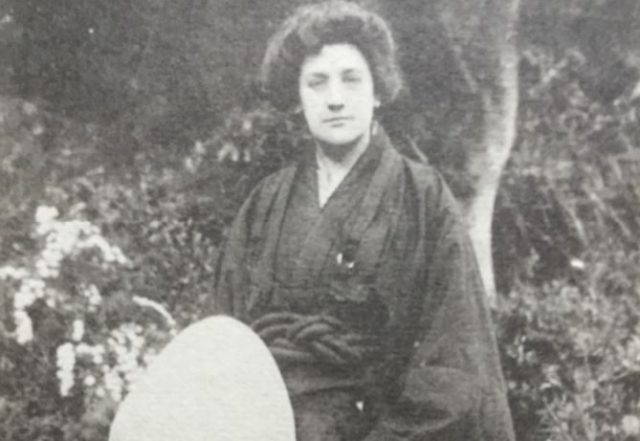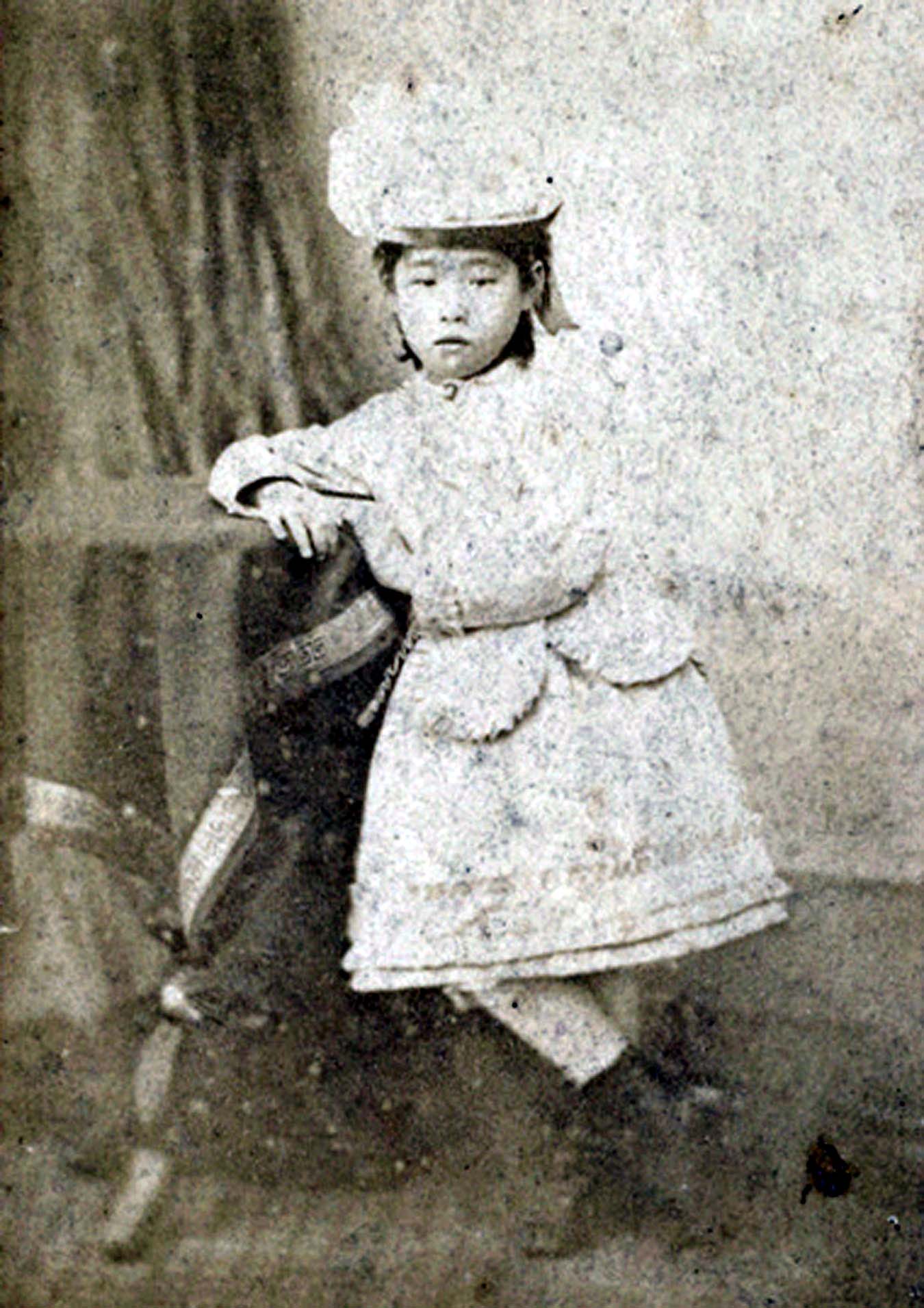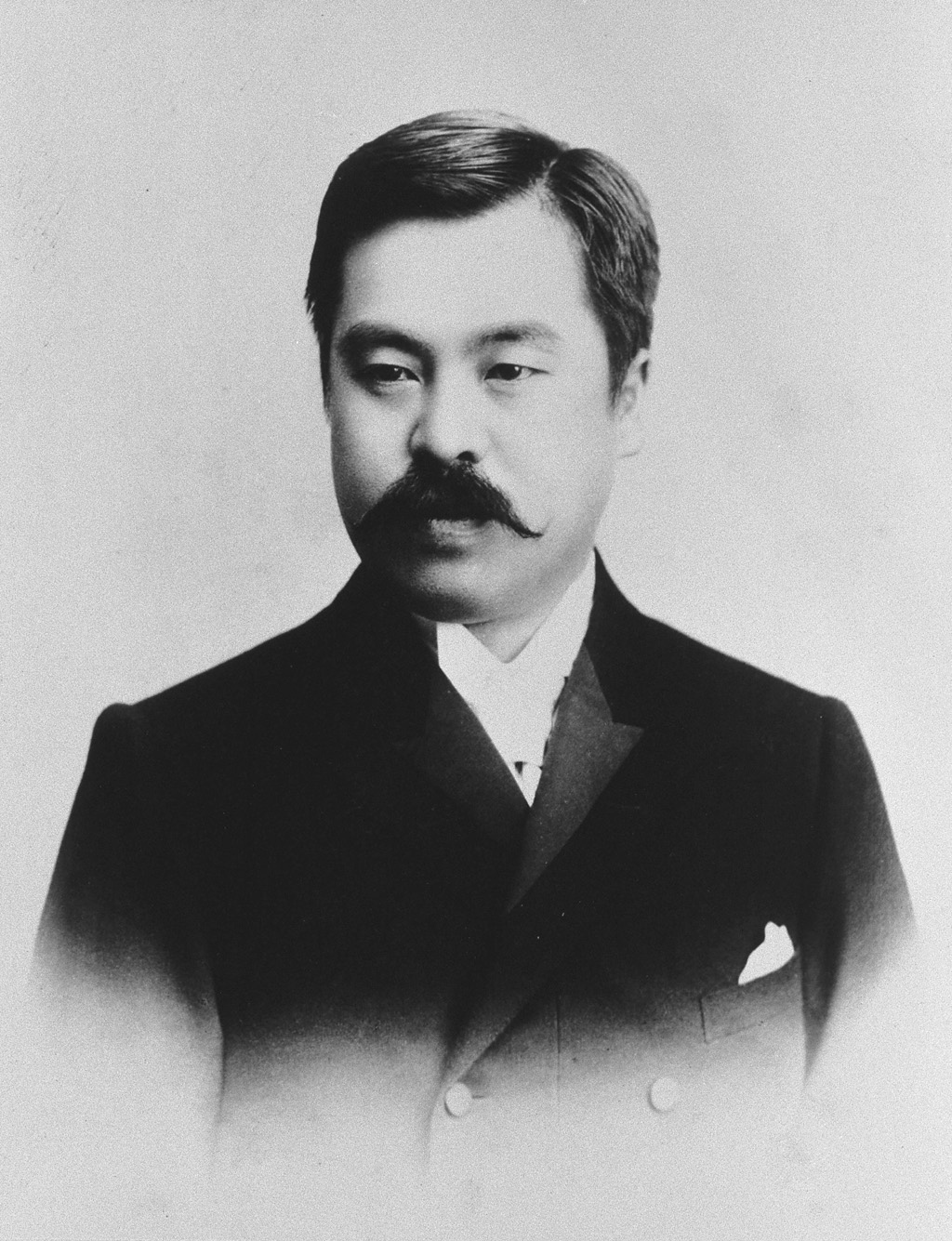|
Hayakawa Senkichirō
was a bureaucrat, politician and entrepreneur in late Meiji and early Taishō period Empire of Japan. He is noted for his involvement in the development of the South Manchurian Railway. Biography Hayakawa was born in Kanazawa, Ishikawa Prefecture. He graduated from the Law School of Tokyo Imperial University in 1887. In January 1890, he was hired by the Ministry of Finance, and became a director of the Bank of Japan in 1899. After leaving public service, Hayakawa became director of the Mitsui Bank in 1901, and chairman of the board in 1909. With the creation of the Mitsui Gomei ''zaibatsu'' through the merger of Mitsui Bank with Mitsui Trading, he became vice director in 1918. He left Mitsui the following year to become director of the Bank of Chōsen. From 1920-1922 he was an appointed member of the House of Peers. In May 1921, he also became President of the South Manchurian Railway Company, and died in office due to a stroke in October 1922. Hayakawa was a close friend ... [...More Info...] [...Related Items...] OR: [Wikipedia] [Google] [Baidu] |
Kanazawa, Ishikawa
is the capital of Ishikawa Prefecture in central Japan. , the city had an estimated population of 466,029 in 203,271 households, and a population density of 990 persons per km2. The total area of the city was . Etymology The name "Kanazawa" (, ), which literally means "marsh of gold", is said to derive from the legend of the peasant Imohori Togoro (literally "Togoro Potato-digger"), who was digging for potatoes when flakes of gold washed up. The well in the grounds of Kenroku-en is known as to acknowledge these roots. The area where Kanazawa is was originally known as Ishiura, whose name is preserved at the Ishiura Shrine near Kenrokuen. The area around Kanazawa was part of ancient Kaga Province. History Muromachi period During the Muromachi period (1336 to 1573), as the power of the central shōguns in Kyoto was waning, Kaga Province came under the control of the Ikkō-ikki, followers of the teachings of priest Rennyo, of the sect, who displaced the official governo ... [...More Info...] [...Related Items...] OR: [Wikipedia] [Google] [Baidu] |
Bank Of Chōsen
The Bank of Chōsen (, ''Joseon Eunhaeng''), known from 1909 to 1911 as the Bank of Korea ( ''Kankoku Ginkō'', ''Hanguk Eunhaeng'') and transcribed after 1945 as Bank of Joseon, was a colonial bank that served as bank of issue for Korea under Japanese rule as well as being a commercial bank, with significant operations beyond Korea until 1945. Formed in 1909 by reorganization of the former Korean operations of Japan's Dai-Ichi Bank, it issued the Korean yen from 1910 to 1945. Its seat was initially established in Seoul (known at the time as Hanseong, then Keijō), relocated to Tokyo in May 1924, and subsequently relocated back to Keijō. It has been described as "a primary component of Japanese foreign expansionism". Following the division of Korea in 1945, the Bank of Chōsen was succeeded in North Korea by the Central Bank of the Democratic People's Republic of Korea, Central Bank of the DPRK. In South Korea, it continued its activity and issued the South Korean won (1945–19 ... [...More Info...] [...Related Items...] OR: [Wikipedia] [Google] [Baidu] |
People Of The Meiji Era
The term "the people" refers to the public or common mass of people of a polity. As such it is a concept of human rights law, international law as well as constitutional law, particularly used for claims of popular sovereignty. In contrast, a people is any plurality of persons considered as a whole. Used in politics and law, the term "a people" refers to the collective or community of an ethnic group or nation. Concepts Legal Chapter One, Article One of the Charter of the United Nations states that "peoples" have the right to self-determination. Though the mere status as peoples and the right to self-determination, as for example in the case of Indigenous peoples (''peoples'', as in all groups of indigenous people, not merely all indigenous persons as in ''indigenous people''), does not automatically provide for independent sovereignty and therefore secession. Indeed, judge Ivor Jennings identified the inherent problems in the right of "peoples" to self-determination, as i ... [...More Info...] [...Related Items...] OR: [Wikipedia] [Google] [Baidu] |
Members Of The House Of Peers (Japan)
Member may refer to: * Military jury, referred to as "Members" in military jargon * Element (mathematics), an object that belongs to a mathematical set * In object-oriented programming, a member of a class ** Field (computer science), entries in a database ** Member variable, a variable that is associated with a specific object * Limb (anatomy), an appendage of the human or animal body ** Euphemism for penis * Structural component of a truss, connected by nodes * User (computing), a person making use of a computing service, especially on the Internet * Member (geology), a component of a geological formation * Member of parliament * The Members, a British punk rock band * Meronymy, a semantic relationship in linguistics * Church membership, belonging to a local Christian congregation, a Christian denomination and the universal Church * Member, a participant in a club or learned society A learned society ( ; also scholarly, intellectual, or academic society) is an organizatio ... [...More Info...] [...Related Items...] OR: [Wikipedia] [Google] [Baidu] |
1922 Deaths
Events January * January 7 – Dáil Éireann (Irish Republic), Dáil Éireann, the parliament of the Irish Republic, ratifies the Anglo-Irish Treaty by 64–57 votes. * January 10 – Arthur Griffith is elected President of Dáil Éireann, the day after Éamon de Valera resigns. * January 11 – The first successful insulin treatment of diabetes is made, by Frederick Banting in Toronto. * January 15 – Michael Collins (Irish leader), Michael Collins becomes Chairman of the Provisional Government of the Irish Free State. * January 26 – Italian forces occupy Misrata, Italian Libya, Libya; the Pacification of Libya, reconquest of Libya begins. February * February 6 ** Pope Pius XI (Achille Ratti) succeeds Pope Benedict XV, to become the 259th pope. ** The Washington Naval Treaty, Five Power Naval Disarmament Treaty is signed between the United States, United Kingdom, Empire of Japan, Japan, French Third Republic, France and Kingdom of Italy, Italy. Japan returns some ... [...More Info...] [...Related Items...] OR: [Wikipedia] [Google] [Baidu] |
1863 Births
Events January * January 1 – Abraham Lincoln signs the Emancipation Proclamation during the third year of the American Civil War, making the abolition of slavery in the Confederate States of America an official war goal. The signing proclaimed the freedom of 3.1 million of the nation's four million slaves and immediately frees 50,000 of them, with the rest freed as the Union Army advances. This event marks the start of America's Reconstruction era, Reconstruction Era. * January 2 – Master Lucius Tar Paint Company (''Teerfarbenfabrik Meister Lucius''), predecessor of Hoechst AG, Hoechst, as a worldwide Chemical, chemical manufacturing brand, founded in a suburb of Frankfurt am Main, Germany. * January 4 – Founding date of the New Apostolic Church, a Christian and chiliastic church, in a schism with the Catholic Apostolic Church in Hamburg, Germany. * January 7 – In the Cantons of Switzerland, Swiss canton of Ticino, the village of Bedretto is ... [...More Info...] [...Related Items...] OR: [Wikipedia] [Google] [Baidu] |
Suzuki Daisetsu
, self-rendered in 1894 as Daisetz, was a Japanese essayist, philosopher, religious scholar, and translator. He was an authority on Buddhism, especially Zen and Shin, and was instrumental in spreading interest in these (and in Far Eastern philosophy in general) to the West. He was also a prolific translator of Chinese, Korean, Japanese, Vietnamese and Sanskrit literature. Suzuki spent several lengthy stretches teaching or lecturing at Western universities and devoted many years to a professorship at Ōtani University, a Japanese university of the Ōtani School of Jōdo Shinshū. Suzuki was nominated for the Nobel Peace Prize in 1963. Biography Early life D. T. Suzuki was born Teitarō Suzuki in Honda-machi, Kanazawa, Ishikawa Prefecture, the fourth son of physician Ryojun Suzuki. The Buddhist name ''Daisetsu'', meaning "Great Humility", the kanji of which can also mean "Greatly Clumsy", was given to him by his Zen master Soen (or Soyen) Shaku.Fields 1992, pg. 138. Alt ... [...More Info...] [...Related Items...] OR: [Wikipedia] [Google] [Baidu] |
Engaku-ji
, or Engaku-ji (円覚寺), is one of the most important Zen Buddhist temple complexes in Japan and is ranked second among Kamakura's Five Mountains. It is situated in the city of Kamakura, in Kanagawa Prefecture to the south of Tokyo. Founded in 1282 (Kamakura period, the temple maintains the classical Japanese Zen monastic design, and both the Shariden and the are designated National Treasures. Engaku-ji is one of the twenty-two historic sites included in Kamakura's proposal for inclusion in UNESCO's World Heritage Sites. It is located in Kita-Kamakura, very close to Kita-Kamakura Station on the Yokosuka Line, and indeed the railway tracks cut across the formal entrance to the temple compound, which is by a path beside a pond which is crossed by a small bridge. History The temple was founded in 1282 by a Chinese Zen monk Mugaku Sōgen (1226-1286) at the request of the then ruler of Japan, the regent Hōjō Tokimune after he had repelled a Mongolian invasion in the ... [...More Info...] [...Related Items...] OR: [Wikipedia] [Google] [Baidu] |
Tsuda Umeko
was a Japanese educator who founded Tsuda University. She was the daughter of Tsuda Sen, an agricultural scientist, and at the age of 7, she became Japan's first female exchange student, traveling to the U.S. on the same ship as the Iwakura Mission. Originally named Tsuda Ume, with ''ume'' referring to the Japanese plum, she went by the name Ume Tsuda while studying in the United States before changing her name to Umeko in 1902. Early life Tsuda Ume was born in the Ushigome neighborhood of Edo (present Minami, Shinjuku) as the second daughter of Tsuda Sen and his wife Hatsuko, a progressive agriculturist and strong proponent of the westernization and Christianization of Japan. In 1871, Tsuda Sen was involved in the Hokkaido colonization project under Kuroda Kiyotaka, and raised the topic of western education for women as well as for men. Under Kuroda's sponsorship, Tsuda Ume was volunteered by her father as one of five women members of the Iwakura Mission. At the ag ... [...More Info...] [...Related Items...] OR: [Wikipedia] [Google] [Baidu] |
South Manchurian Railway Company
The South Manchuria Railway (; ), officially , Mantetsu () or Mantie () for short, was a large of the Empire of Japan whose primary function was the operation of railways on the Dalian– Fengtian (Mukden)–Changchun (called Xinjing from 1931 to 1945) corridor in northeastern China, as well as on several branch lines. In 1905, after Russia's defeat in the Russo-Japanese War, this area was taken over by Japan as the South Manchuria Railway Zone. Mantetsu was established in 1906 to operate the railways taken over from the Russians. Subsequently, Mantetsu expanded by building new lines for itself and for Chinese-owned undertakings, and after the establishment of the puppet state of Manchukuo in 1932, it was also entrusted with the management of the Manchukuo National Railway. Between 1917 and 1925, Mantetsu was also responsible for the management of the Chōsen Government Railway in Japanese-occupied Korea. However, it was also involved in nearly every aspect of the econom ... [...More Info...] [...Related Items...] OR: [Wikipedia] [Google] [Baidu] |
Japanese House Of Peers
The was the upper house of the National Diet#History, Imperial Diet as mandated under the Meiji Constitution, Constitution of the Empire of Japan (in effect from 11 February 1889 to 3 May 1947). Background In 1869, under the new Meiji government, a Japanese peerage was created by an Imperial decree merging the former court nobility ''(kuge)'' and former feudal lords (''daimyos'') into a single new Aristocracy (class), aristocratic Social class, class called the ''kazoku.'' A second imperial ordinance in 1884 grouped the ''kazoku'' into five ranks equivalent to the European Aristocracy (class), aristocrats: prince (equivalent to a European duke), marquess, count, viscount, and baron. Although this grouping idea was taken from the European peerage, the Japanese titles were taken from Chinese language, Chinese and based on the ancient Social structure of China, feudal system in China. Itō Hirobumi and the other Meiji period, Meiji leaders deliberately modeled the chamber on the ... [...More Info...] [...Related Items...] OR: [Wikipedia] [Google] [Baidu] |







